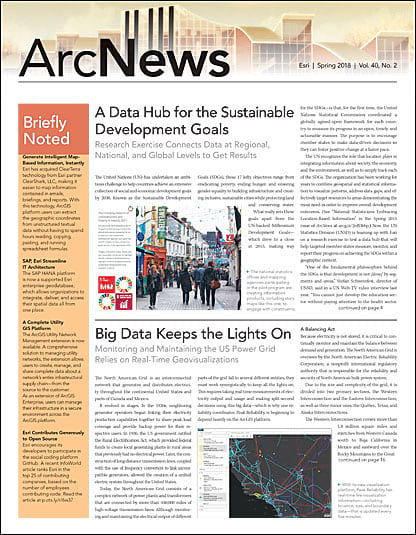The January 2018 ArcGIS release was substantial. Esri software came away with a great deal of fresh functionality, and several apps are now more agile and user-friendly. Here is a closer look at what’s been improved.
ArcGIS Pro
ArcGIS Pro 2.1
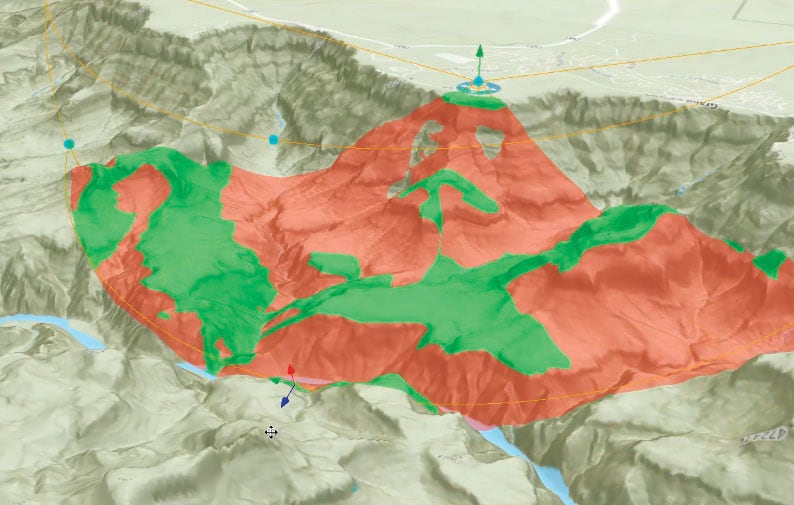
The January 2018 release of ArcGIS Pro, Esri’s flagship 64-bit desktop GIS app, includes user-requested functionality, the latest innovations in working with 2D and 3D data, advanced analytics, and enhanced support across the ArcGIS platform.
ArcGIS Pro 2.1 empowers users to do more with tables, 3D, modeling, analytics, and imagery. Users can now add interactive tables to layouts, including Microsoft Excel spreadsheets and attribute tables from map layers. This release also supports enhanced 3D work with the new 3D editing grid that allows users to precisely snap to, edit, and work with data. Additionally, branches can be added to ModelBuilder using a set of nine logical tools that support the creation of If-Then-Else branching logic in models.
ArcGIS Pro has two new extensions as well. The addition of ArcGIS Business Analyst for ArcGIS Pro brings the first wave of licensed Business Analyst tools to the desktop GIS app, providing users with easy access to marketing analytics, including customer and competitor analyses and site evaluation. And the ArcGIS Image Analyst extension allows users to visualize and analyze imagery—including stereo mapping and advanced image segmentation—in ArcGIS Pro.
ArcGIS Online
Insights for ArcGIS
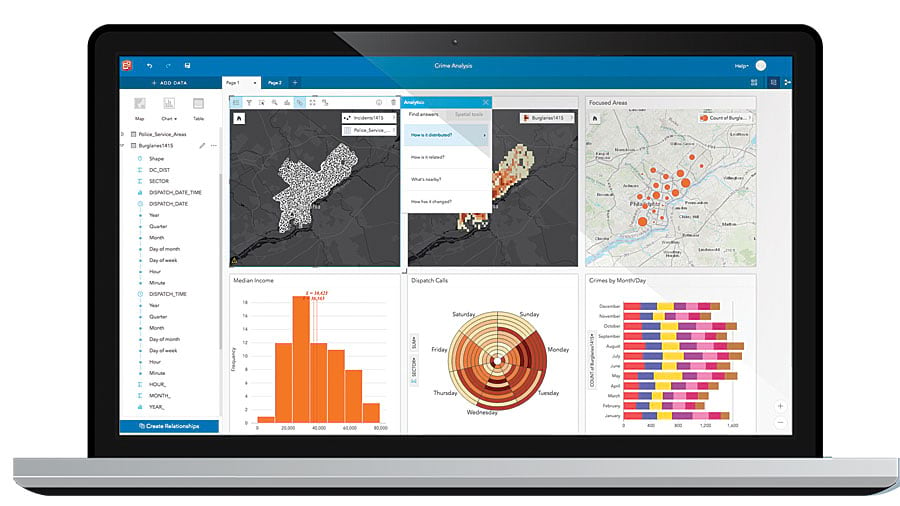
Insights for ArcGIS, the web-based data analytics workbench that allows users to analyze spatial and nonspatial data with simple drag-and-drop functionality, is now available in ArcGIS Online. Users can enjoy the same capabilities that Insights for ArcGIS offers in ArcGIS Enterprise: interactive analysis, the automatic creation of analysis models, and guided spatial workflows. The only difference is, ArcGIS Online does not connect directly to enterprise databases.
With Insights for ArcGIS, users can interact with data in new ways using cards, which provide live snapshots of analysis. For example, a user can make a data selection on one card and see that selection automatically filter the other linked cards. This allows users to slice and dice their data and quickly reveal relationships. Insights for ArcGIS has more than 17 data visualization types as well that can be applied to data. Users can visualize large datasets via binned maps, a map type that makes it easier to display and view large or clustered datasets. For charting many variables, Insights for ArcGIS supports bar and column charts created with two string fields that can be visualized as stacked charts.
New users can get a free trial to ArcGIS Online and Insights for ArcGIS. ArcGIS Online users can sign up for a free trial of Insights for ArcGIS in the ArcGIS Marketplace.
Operations Dashboard for ArcGIS
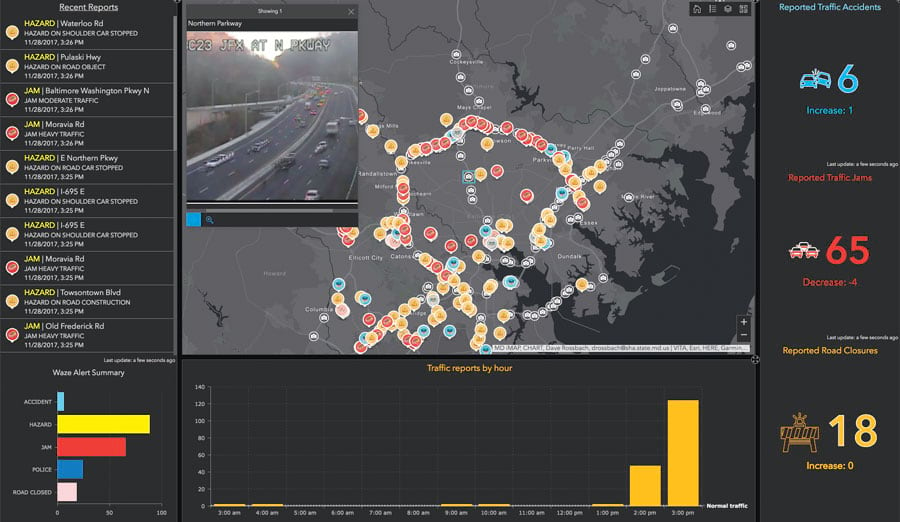
Operations Dashboard for ArcGIS is now a configurable web app included with ArcGIS subscriptions. Delivering clear, concise, and intuitive views of meaningful data, it is available for both ArcGIS Online and ArcGIS Enterprise via the app launcher.
With Operations Dashboard, members of an organization can create, browse, and manage dashboards within their content or from the dashboard home page. They can also share dashboards with other members of the organization and the public.
Dashboards inform by consolidating and arranging information in a single screen—using charts, gauges, indicators, maps, and other graphic elements—so it can be visualized at a glance. Organizations often employ dashboards to make decisions in real time, using them to monitor events, assets, services, people, and more. Dashboards can also be interactive, wherein visual elements are configured to communicate with one another, providing viewers with more context and better understanding.
Operations Dashboard features smart mapping, including heat map renderers, vector basemaps, stream layers, labels, and custom pop-ups. Arcade expressions can be used to enhance map labels and symbology. The app offers attractive and intuitive defaults and is highly configurable, enabling users to create compelling information products.
For those using the desktop-based Operations Dashboard, operation views are still supported but won’t be updated. Esri encourages users to move to the new browser-based version.
ArcGIS Enterprise
ArcGIS Enterprise 10.6
Each release of ArcGIS Enterprise expands on the software’s key areas—mapping, analytics, data management, and Web GIS. Highlights from the ArcGIS Enterprise 10.6 release include updates to analytics, mapping, collaboration, the cloud, and licensing.
For custom analytics in ArcGIS Enterprise 10.6, users throughout the entire organization can now easily access custom web tools for modeling, aggregation, and routing. Point clustering makes decluttering web maps simple with an out-of-the-box renderer that shows general trends plus exact data points. For distributed collaboration, this release enables users to securely share content to other Web GIS portals—between two or more ArcGIS Enterprise portals and even to ArcGIS Online. Also, users can now generate and serve map and image service caches from cloud stores such as Amazon S3 and Microsoft Azure Storage.
In terms of licensing, all ArcGIS Enterprise Standard and Advanced customers are now eligible to add viewers (Level 1 named users) at no additional cost. Administrators can provide viewer-level access to everyone in the organization who needs to see secured layers, maps, apps, and services within ArcGIS Enterprise. To maintain the performance of an ArcGIS Enterprise deployment, users may need to add ArcGIS Server capacity (cores) to the deployment if a large number of viewers are added.
ArcGIS GeoEvent Server
ArcGIS GeoEvent Server is a server licensing role of ArcGIS Enterprise that enables the real-time GIS capabilities of enterprise GIS. The 10.6 release of ArcGIS GeoEvent Server provides new functionality, enhancements, and bug fixes in several key areas.
Some of the new features include support for multiple-machine sites and the ability to start and stop all inputs, outputs, and GeoEvent Services. This release also includes enhanced on-the-fly aggregation to support polygon, polyline, and multipoint features in the spatiotemporal big data store. Data retention purge rules have been improved as well, giving users the ability to specify WHERE clauses in the spatiotemporal big data store.
This release of ArcGIS GeoEvent Server has also added developer support for on-the-fly space-time volume aggregation in the spatiotemporal big data store. Plus, new documentation on string functions is available in the Field Calculator Processor, GeoEvent Server REST API, and GeoEvent Server SDK, as well as for monitoring log files and system requirements.
ArcGIS Monitor
Introducing ArcGIS Monitor—a tool uniquely tailored to monitor the health of an ArcGIS Enterprise implementation throughout its life cycle. It provides awareness of system usage and performance, helping users get the most from their GIS and IT investments.
ArcGIS Monitor helps users reduce costs with more effective system operation. It allows an organization to oversee databases, networks, and GIS software with alerts and notifications to detect and resolve problems or potential problems. Additionally, ArcGIS Monitor users can deliver system updates to staff and management by using reports and metrics.
A New Platform, an Updated App
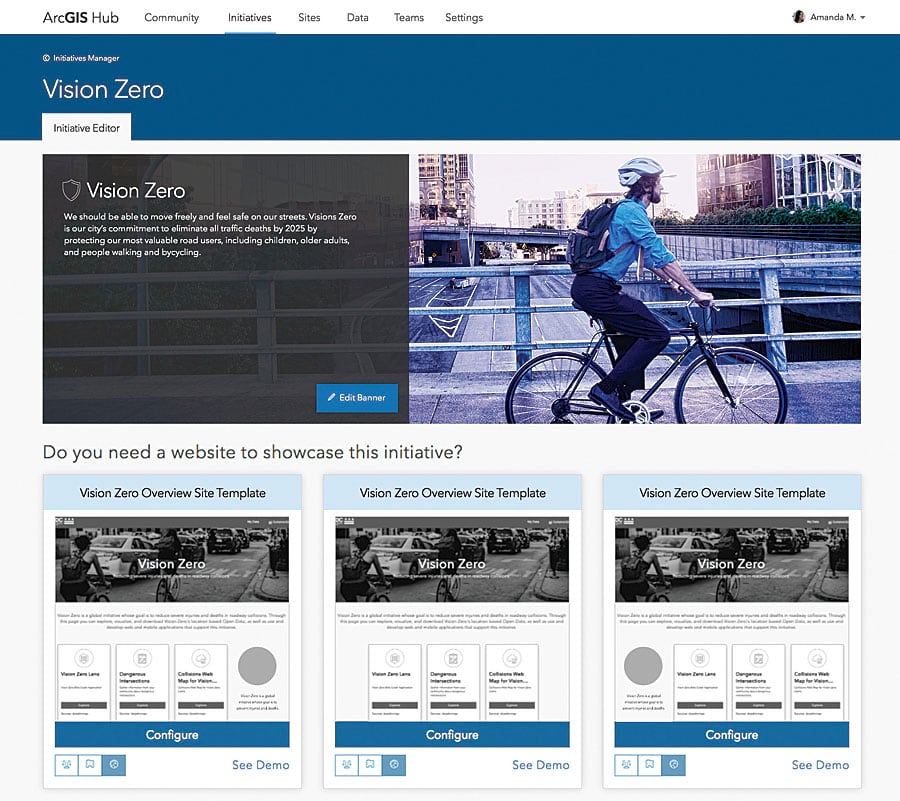
ArcGIS Hub
ArcGIS Hub is now available to everyone, not just early adopters. A new two-way engagement platform, ArcGIS Hub enables government agencies to leverage existing and open data by linking it directly to community priorities. It employs innovative communication tools to foster collaboration, empowering governments to connect both internal departments and external stakeholders with issues and initiatives.
ArcGIS Hub comes with the tools communities need to track the progress and outcomes of their initiatives. It engages developers and citizens, giving them the ability to apply data to the task of making communities more efficient, livable, smart, and sustainable.
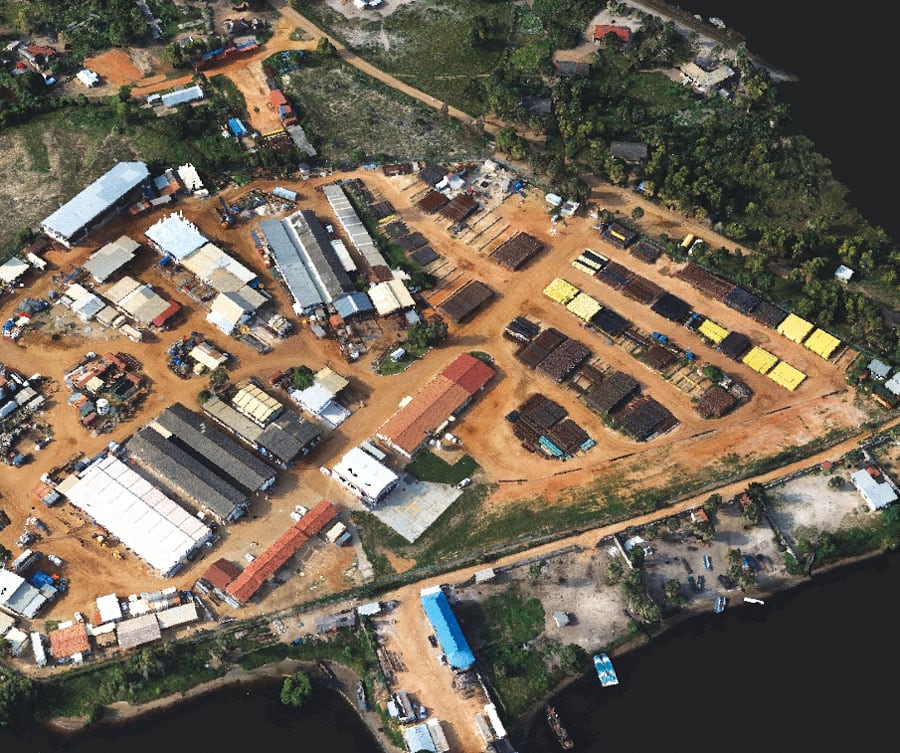
Drone2Map for ArcGIS
The latest release of Drone2Map for ArcGIS, which comprises new functionality, enhancements, and bug fixes, was significantly influenced by feedback from users. Some of the most requested features include licensing support for Integrated Windows Authentication (IWA) and Security Assertion Markup Language (SAML) secured portals, improved performance for creating projects and adding source imagery, and the ability to log out and exit the app on shared workstations. Users can also enjoy an even better experience working with images created by Drone2Map for ArcGIS, such as 3D point clouds that make it easy to analyze built-up and natural features.
APIs and SDKs
ArcGIS API for JavaScript
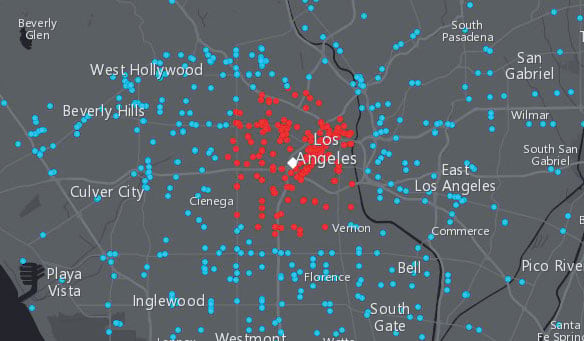
ArcGIS API for JavaScript is designed to maximize productivity when building beautiful, engaging web mapping apps. The API combines modern web technology with powerful geospatial capabilities to enable users to create high-performing apps and smarter data visualizations. The latest API versions (4.6 and 3.23) include new features, such as a new directions widget, a 3D measurement widget, and a layer refresh interval.
The 4.x series of ArcGIS API for JavaScript is Esri’s next generation JavaScript API that integrates 2D and 3D into a single, easy-to-use, powerful API. Version 4.6 lets users build full-featured 3D apps powered by web scenes that can include rich information layers such as terrain, basemaps, imagery, features, integrated mesh layers, and 3D objects.
ArcGIS API for Python
ArcGIS API for Python is a powerful Python library for working with maps and geospatial data. It provides simple and efficient tools for sophisticated vector and raster analysis, geocoding, mapmaking, routing, and directions, as well as for organizing and managing a GIS with users, groups, and information items.
In addition to working with user data, the library has access to ready-to-use maps and curated geographic data from Esri and other authoritative sources. It also integrates well with the scientific Python ecosystem and includes rich support for Pandas and Jupyter Notebook.
ArcGIS API for Python in Jupyter Notebooks is great for conducting exploratory data analysis. Users can quickly visualize spatial patterns with smart mapping, as well as the attribute data in tabular form. The latest 1.3 release packs some serious enhancements for GIS administration, content management, and performing spatial analysis.
ArcGIS Runtime SDKs
ArcGIS Runtime SDKs for Android, .NET, iOS, macOS, Java, and Qt help users build and deploy native apps for a variety of popular platforms and devices. Users can add powerful spatial capabilities to native apps and empower app users to do all things GIS—even when offline.
The 100.2 release, also known as ArcGIS Runtime Update 2, is the second major update to 100.0.0. It brings Esri closer to functional equivalency with 10.2.x versions of Runtime. And 100.2 bridges most of the functional gaps between ArcGIS Engine and Runtime, allowing users to plan their migration to the ArcGIS Runtime platform.
With this release, users experience new layers and data sources, additional analysis tools, 2D and 3D rendering improvements, better handling of standard and custom geographic transformations, workflow productivity enhancements, bug fixes, and more.
For a complete guide to the January 2018 ArcGIS release, visit the ArcGIS Blog.

